

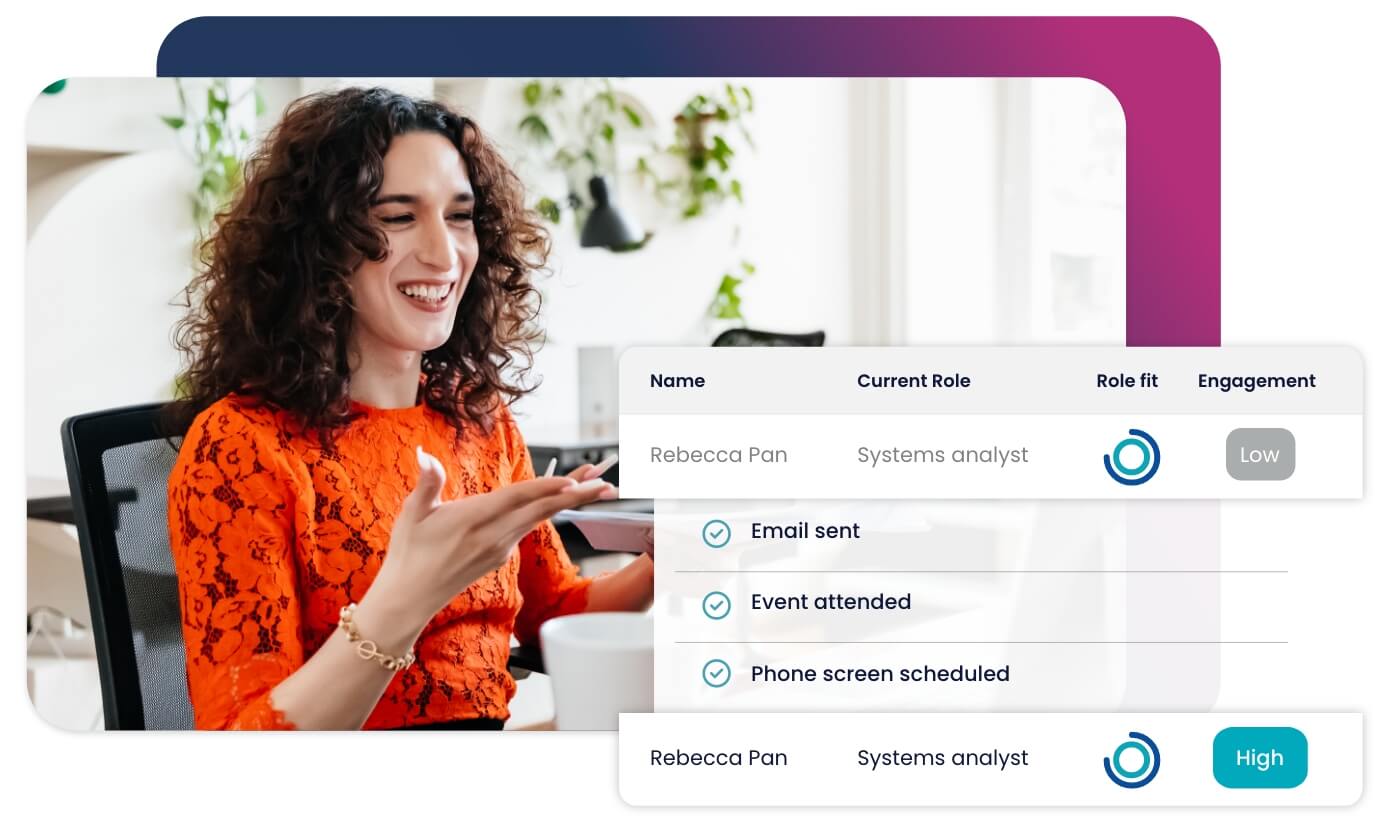
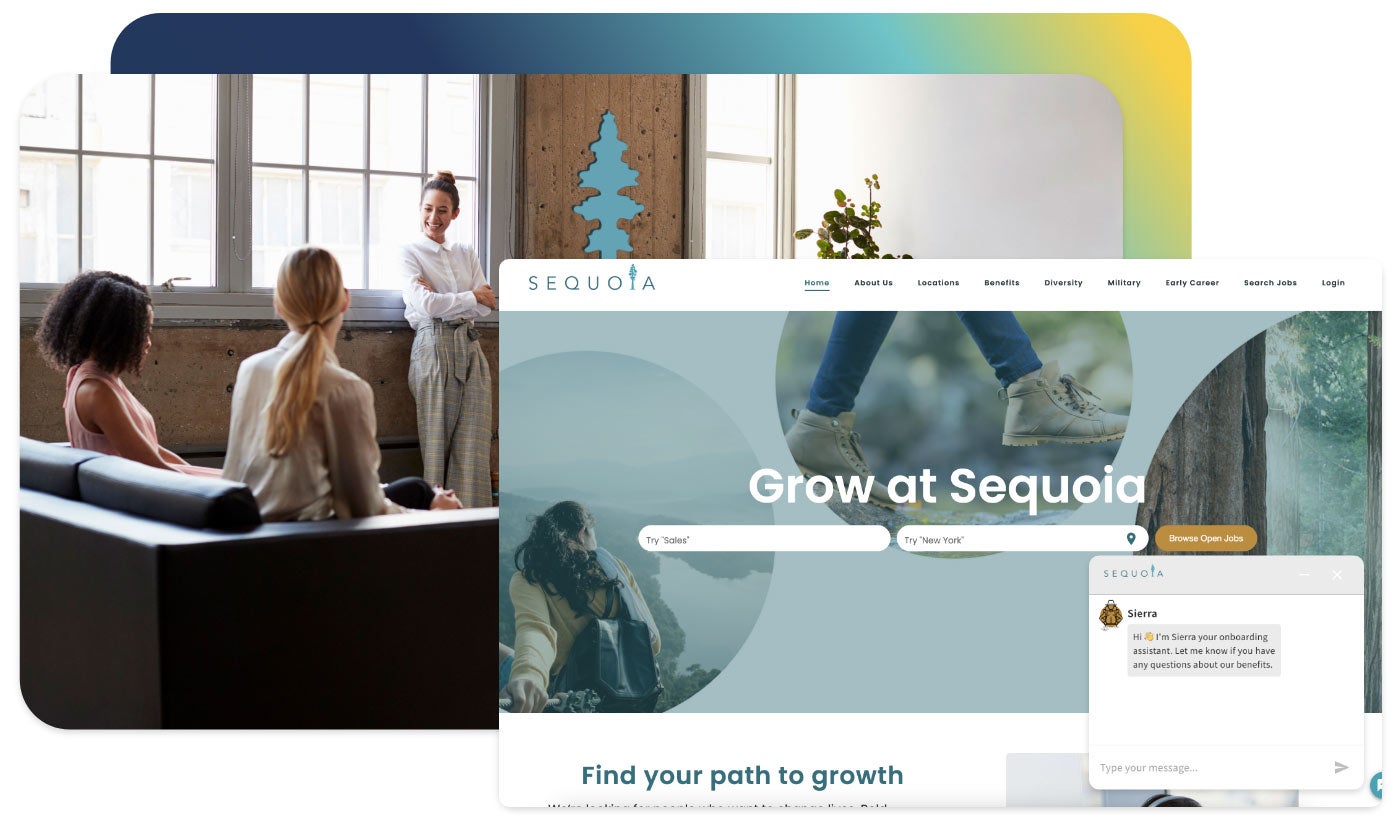


Accelerate hiring key talent to deliver care and exceed patient satisfaction.

Attract skilled candidates, speed up hiring and grow expertise in your workforce.

Simplify recruiting finance and banking talent with a platform for hard-to-fill roles.


Build a talent pipeline that engages and drives your business forward.


See how diverse and global enterprises use iCIMS to employ millions, drive innovation and connect communities worldwide.

Learn how a beloved restaurant hires 40,000+ annually with a great candidate experience.
Uncover unique market insights, explore best practices and gain access to talent experts across our library of content.


View press releases, media coverage, the latest hiring data and see what analysts are saying about iCIMS.


Streamline your tech stack and take advantage of a better user experience and stronger data governance with ADP and iCIMS.
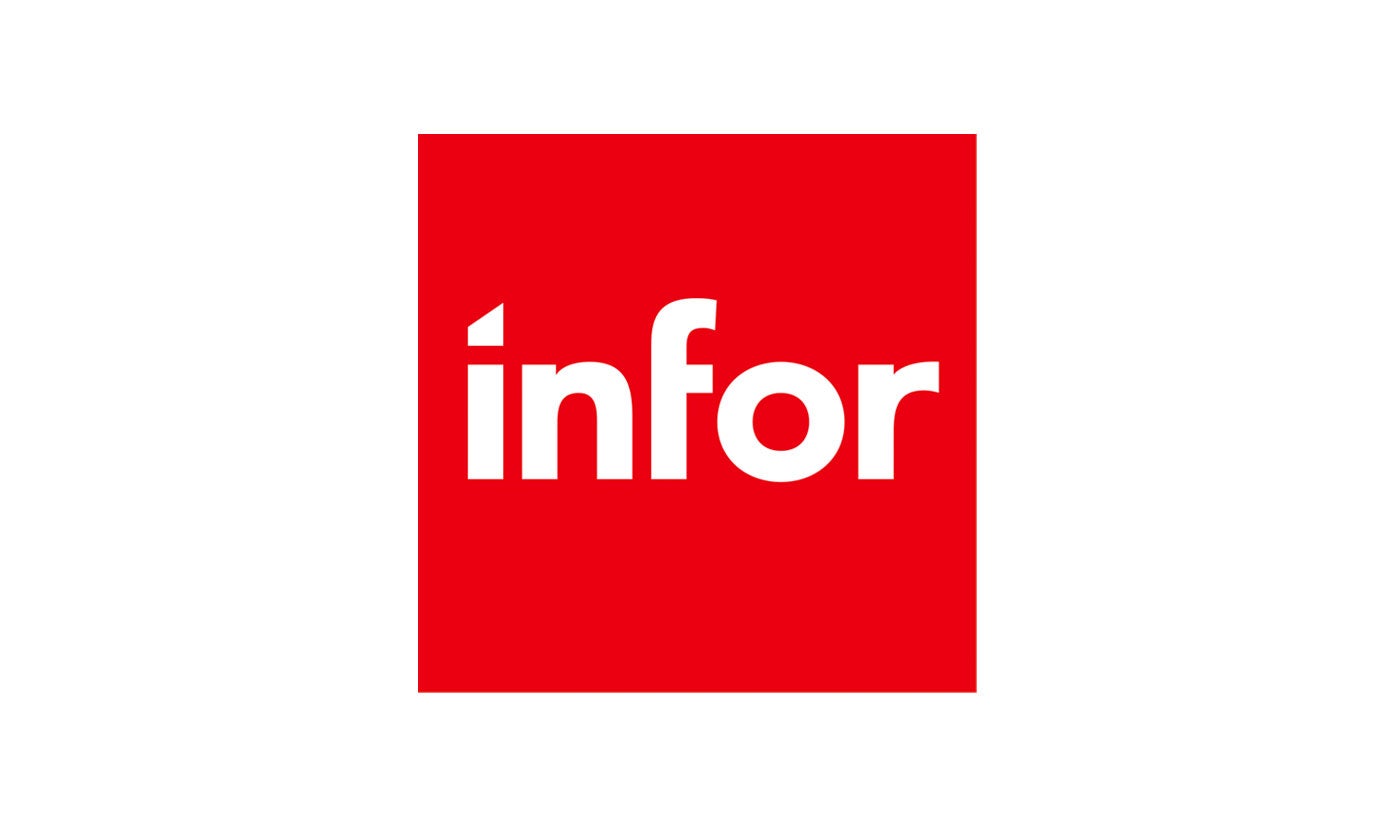
The combined power of iCIMS and Infor helps organizations strategically align their business and talent objectives.

Our award-winning partnership with Microsoft is grounded in a shared desire to transform the workplace and the hiring team experience.
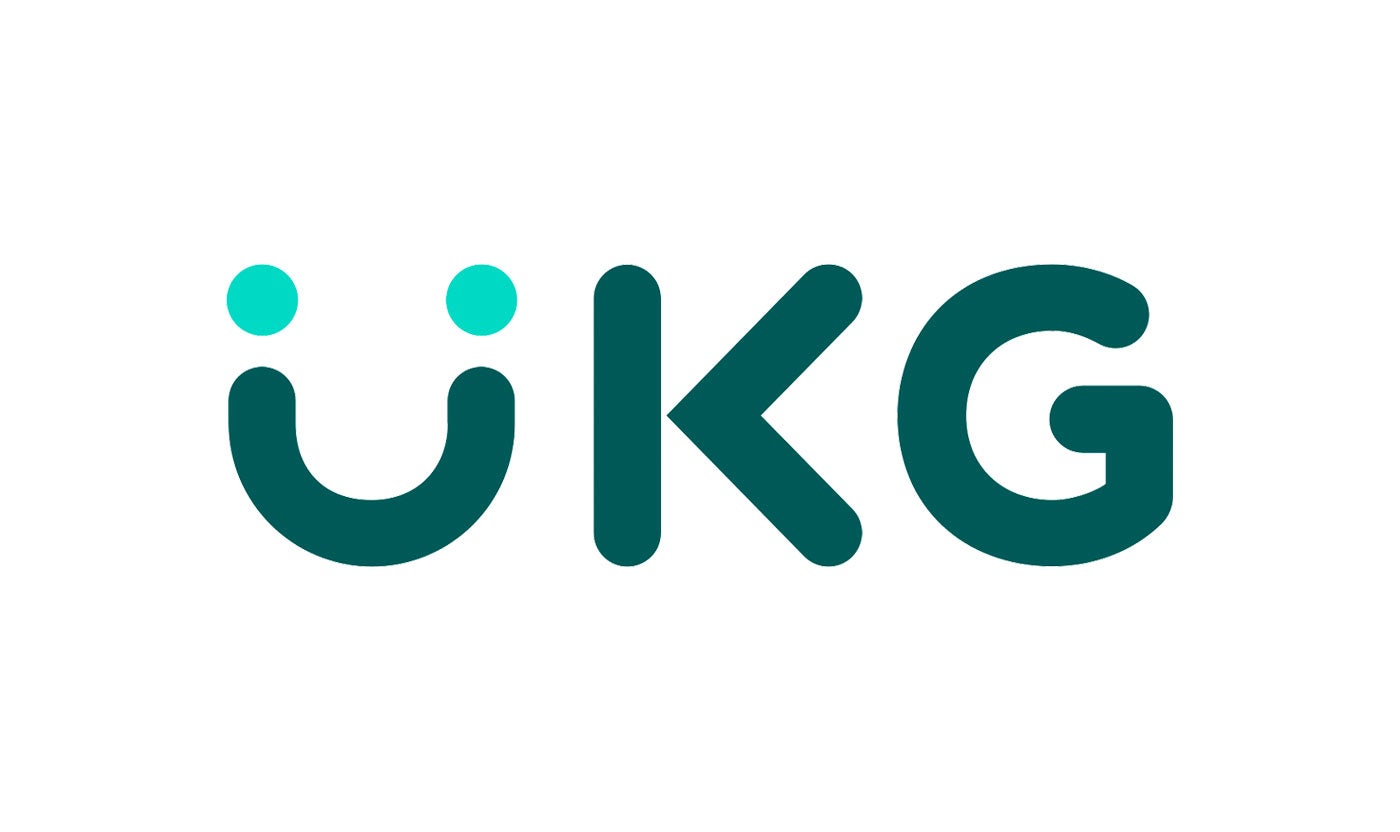
Our partnership with Ultimate Kronos Group (UKG) supports the entire talent lifecycle by bringing frictionless recruiting solutions to UKG Pro Onboarding.
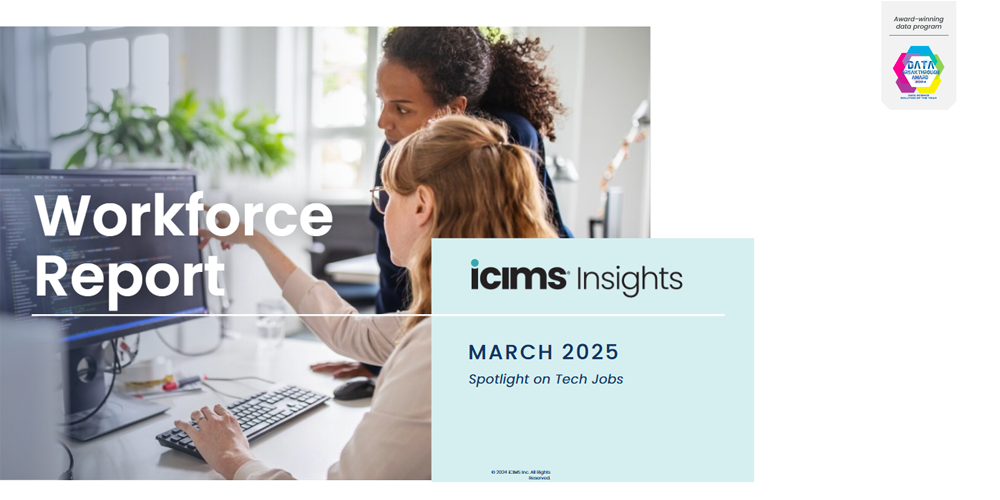
The labor market is still navigating some choppy waters as employers hit pause on job openings and hiring. But when it comes to tech jobs, demand is through the roof, the competition is fierce, and landing a role feels like winning a game of musical chairs.
In this month’s workforce report, we’re diving into:
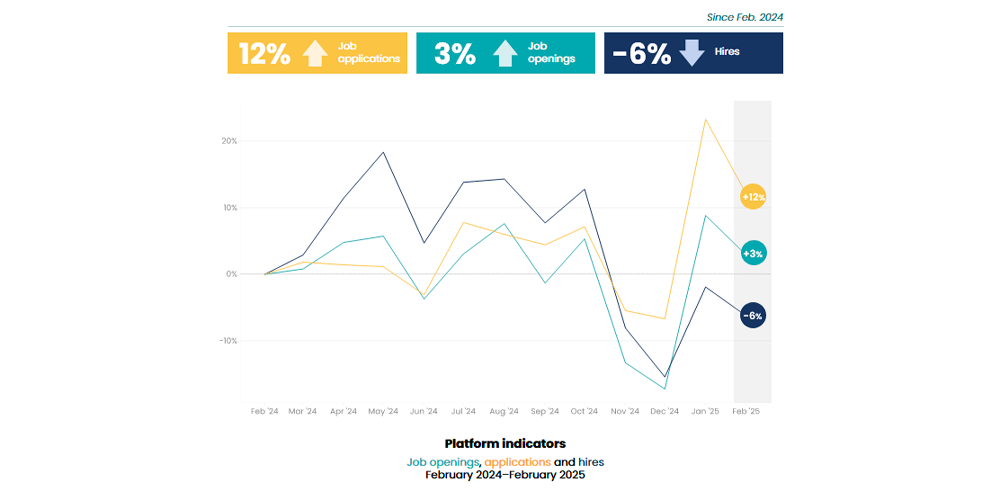
Despite ongoing uncertainty, job seekers are still showing enthusiasm for new opportunities. January and February saw the highest application volumes we’ve seen since the start of 2024, even as hiring dropped by 6%.
What’s fueling this surge in applications? While unemployment and quit rates are holding steady, a rise in weekly unemployment claims indicates people may be struggling to find jobs.
With the job market still in flux, it’ll be interesting to see how this wave of applications shakes out. Will companies step up to meet this eagerness, or will the gap remain? The outcome could shape the labor market for the rest of the year.
Let’s look at tech jobs. Not the ones in the “tech industry,” but tech roles that pop up across all industries, like a software engineer at a healthcare company or a data scientist working at a financial firm. What do the demand and hiring trends look like for these positions?
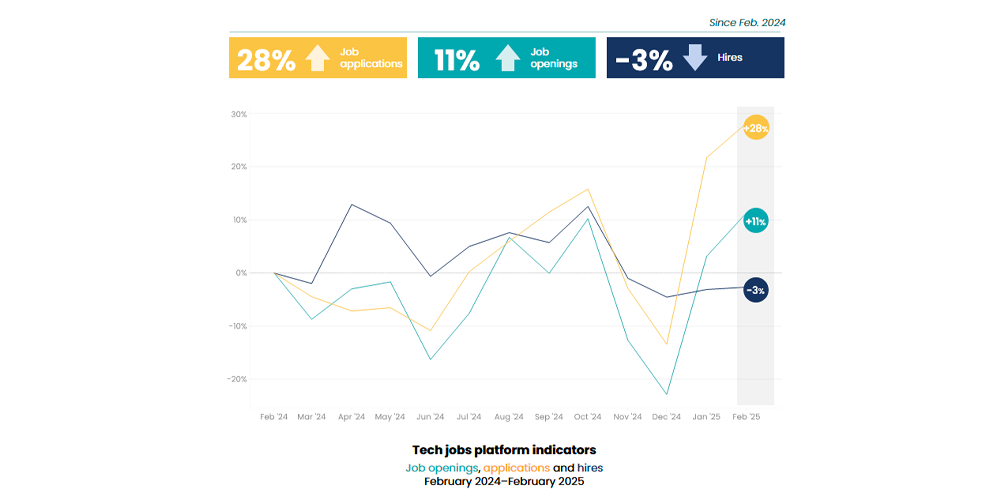
Tech jobs continue to attract loads of interest from job seekers. Even with a cooling effect on white-collar hiring, job seekers haven’t shied away from these roles. In fact, applications for tech positions surged 28% in the past year, showing that demand remains high even amid broader market uncertainty.
But are these applications translating into hires? Job openings for tech roles have risen 11% year over year, yet hires are down 3%. This raises a key question: Is the hiring slowdown still in full swing, or are employers just being more selective?
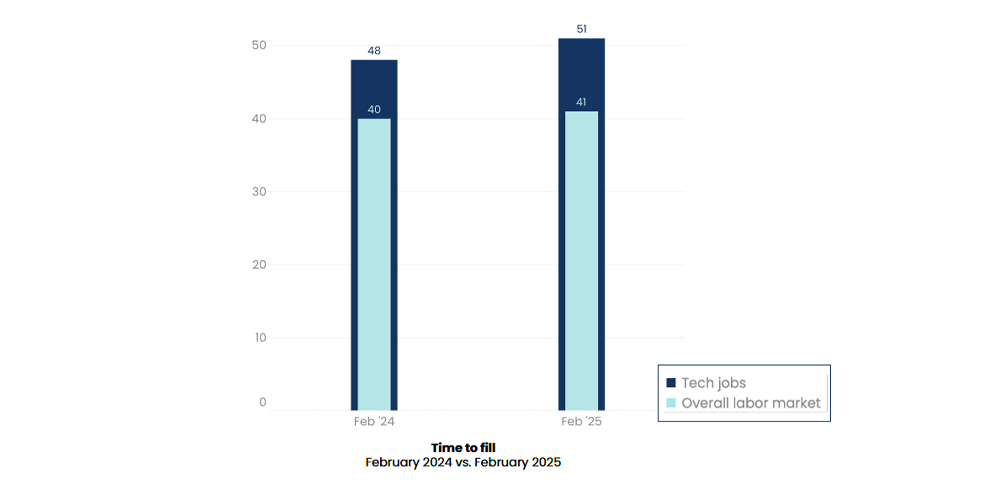
What makes tech roles so appealing? When we asked job seekers, 57% pointed to high salaries, while 37% said job stability and flexibility in work arrangements as their top draws. Clearly, competitive pay and work-life balance are major factors in attracting talent to these positions.
For tech jobs, the average applicants per opening (APO) outpaces the overall labor market at 68—up from 60 last year. That’s significantly higher than the overall labor market at 34 APO.
Some of the hottest, most sought-after tech positions? Web developers and data scientists both draw considerable interest from candidates.
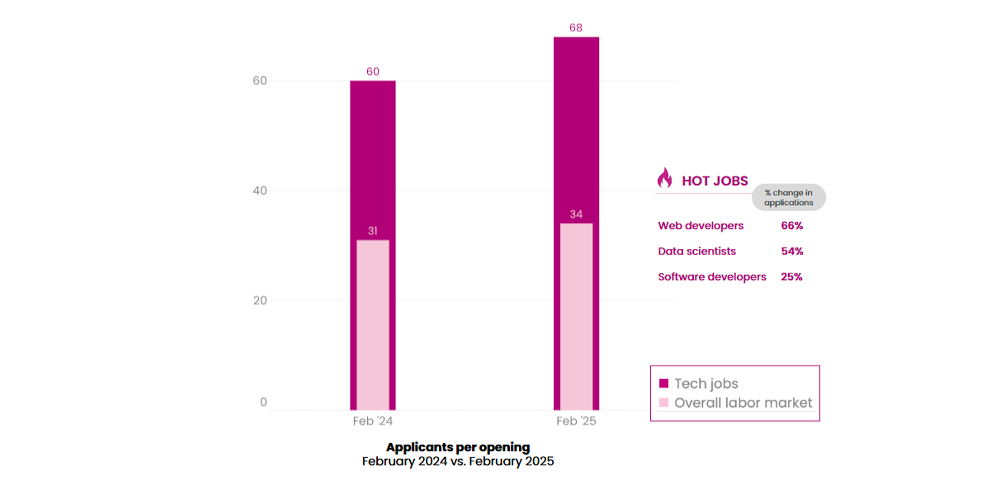
Even as resumes flood in for these roles, recruiters might be finding it tricky to pin down the right fit. The time-to-fill (TTF) for tech jobs rose to 51 days in February 2025, up from 48 days the year prior. That’s 10 days longer than the overall labor market.
What’s causing this extended timeline? It might be tied to the AI skills gaps. Less than a quarter (21%) of job seekers feel adequately prepared to adopt AI-driven changes in the workplace, indicating that the talent pool may not yet be fully equipped to meet employers’ evolving demands.
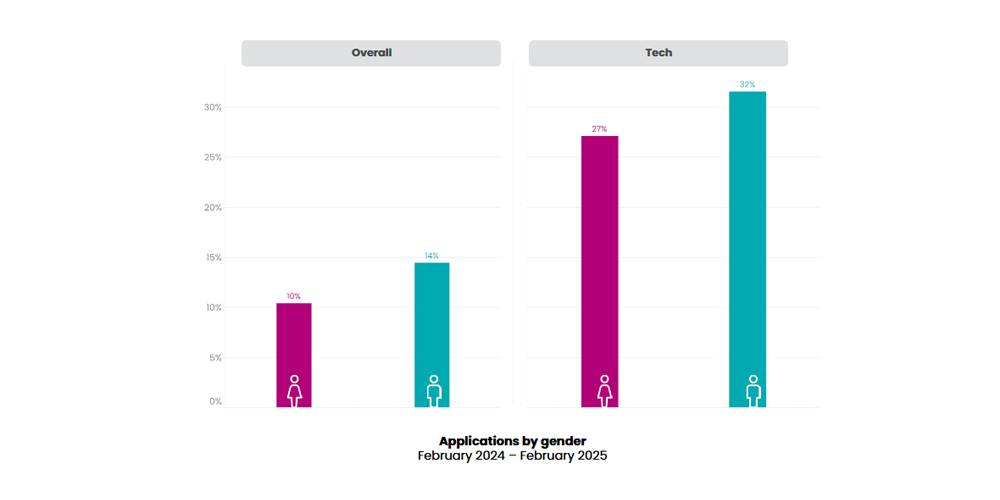
AI literacy is becoming an increasingly important skill, but there’s a noticeable divide in perception and adoption. Recent data shows that just 10% of women consider AI literacy a must-have for landing a job, compared to 18% of men.
Women are also less likely to have upskilled in AI over the past six months; 40% say they don’t plan to enhance their AI skills, versus to 29% of men. Meanwhile, 27% of men feel fully prepared to adapt to AI-driven changes, while only 14% of women feel the same.
As AI continues to influence job requirements, it will be crucial for both job seekers and employers to close this skills gap and build a more equitable and prepared workforce.
There’s more detail in this month’s report than we could cover here, including a detailed breakdown of which industries are hiring the most for tech, and which age cohorts are applying. Read the full March Insights Report here.

Amy brings a knack for storytelling and strategy to her role at iCIMS. A longtime journalist and marketing consultant, she is on a mission to make her content sparkle with details and clarity.
As an essayist, Amy’s writing has appeared in The Washington Post and Family Circle magazine. When not writing, you can find her going for long hikes in the woods with her goldendoodle, working in her veggie garden or researching her next travel destination – which has included spots like Hong Kong, the Greek islands and Newfoundland.




